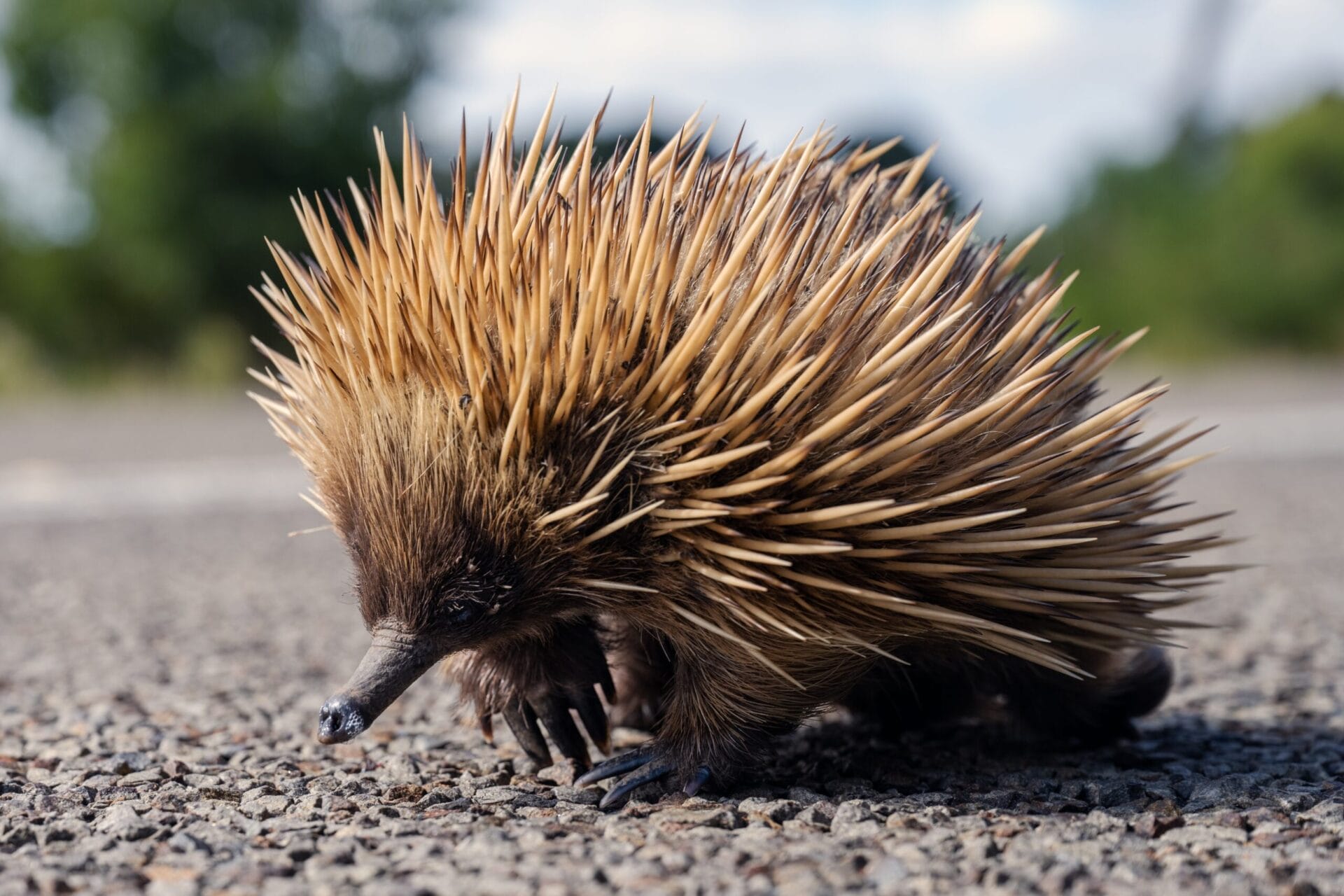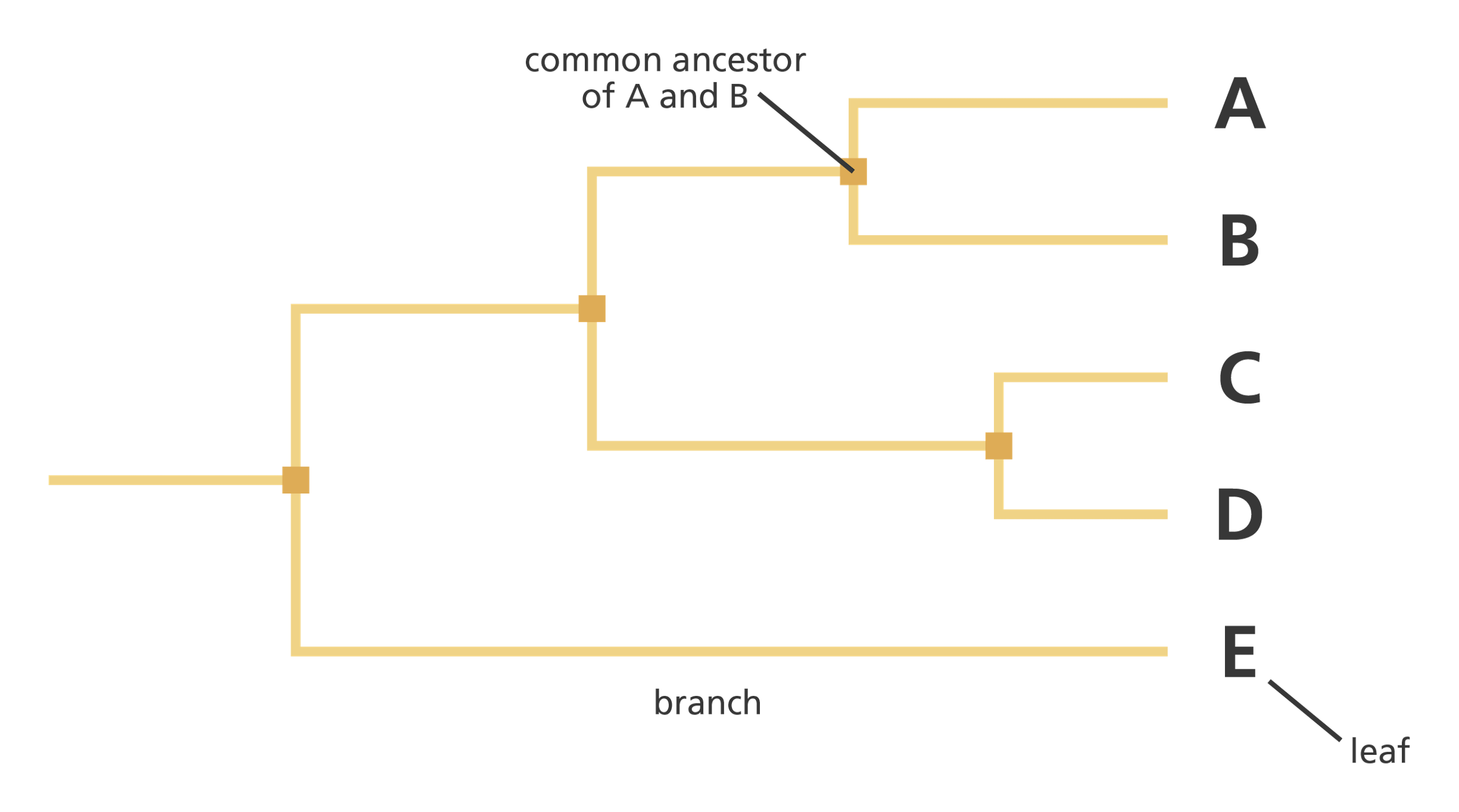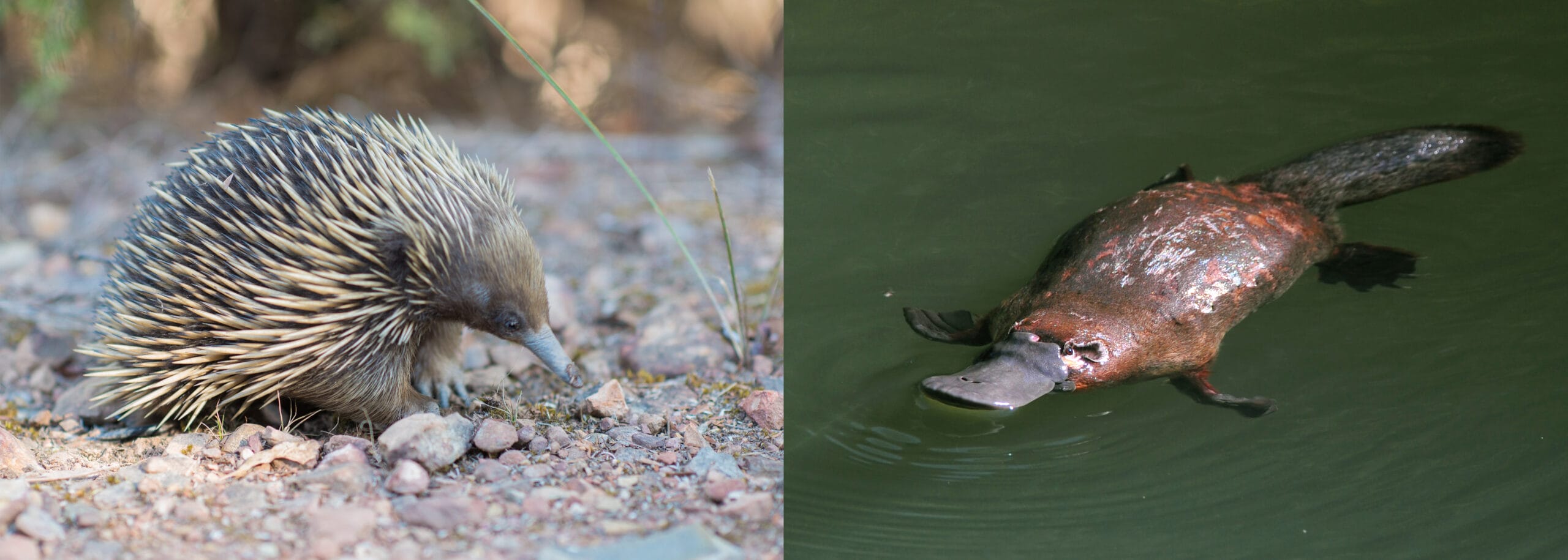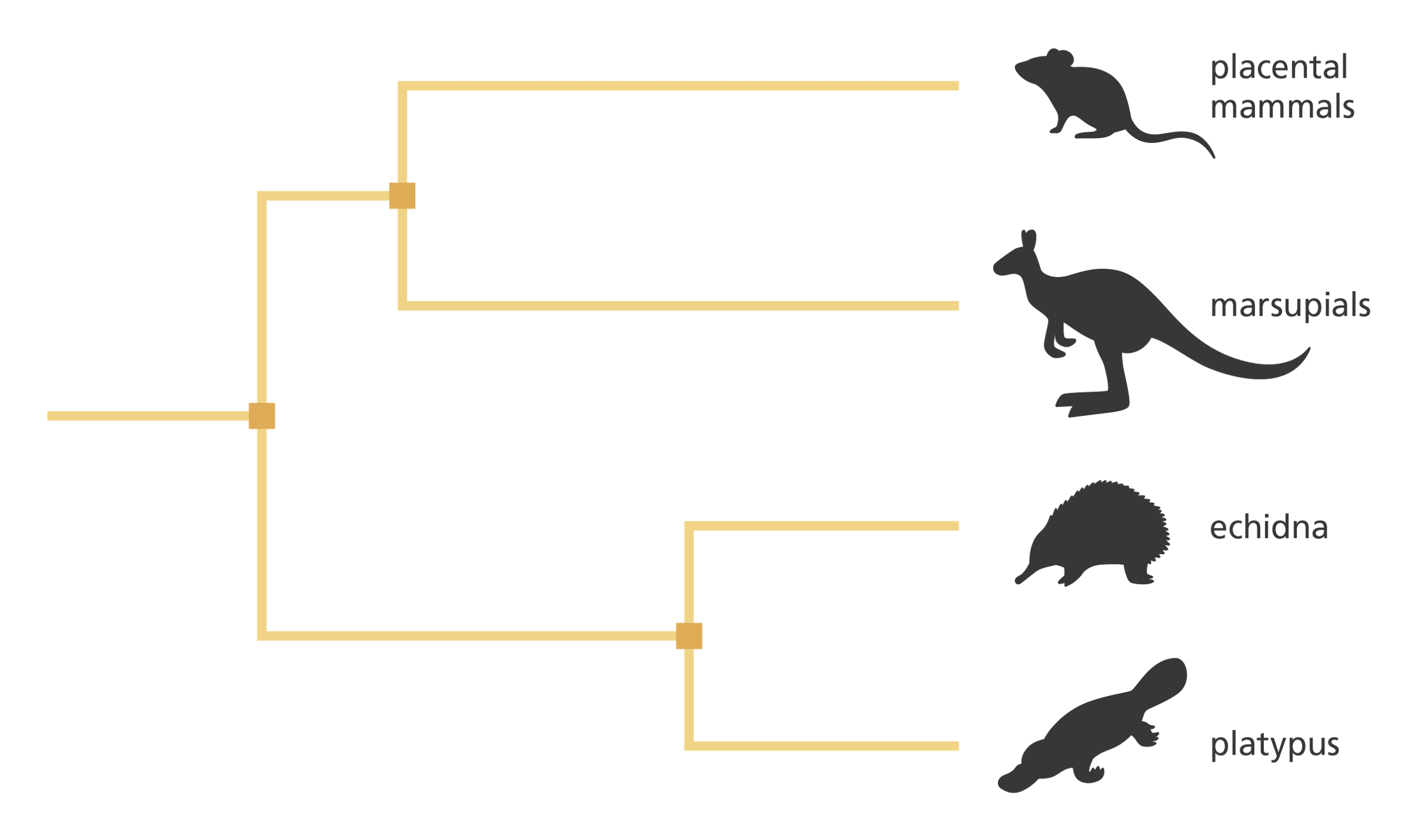What is phylogenetics?

Phylogenetics is the study of the evolutionary relationships between organisms, based on their genetic material revealed through DNA and RNA sequencing.
- A phylogeny, or a phylogenetic tree, is a way of visually representing evolutionary relationships. They are a scientist’s best guess as to how an organism or group of organisms have evolved.
- Evolutionary biologists use phylogenetic trees to describe how individuals or groups are related to each other through their shared ancestry.
Key terms
Species
A group of closely-related organisms that have common physical and genetic characteristics and are able to interbreed to produce fertile offspring.
Evolution
The process by which organisms change and adapt by natural selection.
What is a phylogenetic tree?
- Phylogenetic trees are made up of ‘leaves’ and ‘branches’. The leaves are at the tips of the tree and represent the organisms whose evolution you are describing.
- Leaf labels are often letters, pictures, or species names.
- A leaf can represent an individual organism – such as a virus or bacterium, an entire species, or even a single gene. A tree can be used to represent one species’ evolution, or the evolution of all animals.
- Each leaf is connected by a series of branches. These branches represent how leaves relate to one another.

Basic diagram of a phylogenetic tree, showing that A and B have a more recent common ancestor than A and E. Image credit: Laura Olivares Boldú / Wellcome Connecting Science
How do we use phylogenetic trees to describe evolution?
- Beginning with a common ancestor, branches break away from each other each time an evolutionary change occurs. Leaves that are closer together on a tree are therefore more closely related than leaves that are further apart.
- When an organism acquires a new trait (like the ability to fly, webbed toes, or a longer beak), a new branch forms on the tree.
- All of the leaves on the branches that descend from that new branch will be related and possess the same new trait. This grouping is called a clade.
- For example, the common ancestor of all birds was a dinosaur that evolved wings about 150 million years ago! Ever since then, all branches descended from that ancestor have had wings, leading to the evolution of birds as we see them today.
- Leaves with more recent shared branches are more closely related to each other because they share more new traits in common.
- The more branch points there are separating two leaves on the tree, the more distantly related they become. Each branch represents a point where they have acquired more traits that make them different from the common ancestor they evolved from.
- Sometimes, organisms lose traits they evolved with, as they adapt to a changing environment. This makes it hard to believe some species are related, until you take a look at a phylogenetic tree.
- For example, the echidna shares a common ancestor with the platypus, despite looking more like a hedgehog. The echidna evolved from an aquatic ancestor and, unlike the platypus, lost its venomous trait.

Image credit: Pixabay / Shutterstock

A phylogenetic tree showing the close evolutionary relationship between the echnidna and platypus. Image credit: Laura Olivares Boldú / Wellcome Connecting Science
- Species trees are made by careful observations of a species’ physical traits and behaviours, and more recently, sequencing the genomes of the organisms.
- Using this information, we carefully reconstruct the sequence of changes that occurred to eventually make up a species.
- Evolutionary changes that underlie how branches are drawn take many forms. Some examples are:
- A new physical trait (eg the formation of wings)
- A new behaviour (eg the evolution of singing in songbirds)
- A change in an organisms’ DNA sequence
- Different phylogenetic trees rely on some methods more than others. For example, with hard-to-see, microscopic organisms such as viruses, bacteria, and other parasites, we rely heavily on mutations in their DNA sequences to tell them apart. The large-scale observations we use for mammals or flowering plants are not much use with viruses!
- All phylogenetic trees are hypotheses. They represent our best estimate as to how to group organisms based on the traits we can measure. Because of this, we are always re-drawing the tree of life as we learn more about the world around us. The Interactive Tree of Life (iTOL) is regularly updated with the newest data.
How do we group organisms on a phylogenetic tree?
- Scientists group organisms based on shared traits, or common ancestors, often with the use of a phylogenetic tree. These groupings are called taxonomies.
- Taxonomic ranks are hierarchies that include more and more species as they get bigger. Each group is defined by a distinctive trait or set of traits that set their common ancestor apart.
- The eight main taxonomic ranks are: domain, kingdom, phylum (or division in botany), class, order, family, genus, species.
- Classification of the short-beaked echidna using the eight main taxonomic ranks:
| Domain | Eukarya |
| Kingdom | Animalia |
| Phylum | Chordata |
| Class | Mammalia |
| Order | Monotremata |
| Family | Tachyglossidae |
| Genus | Tachyglossus |
| Species | Tachyglossus aculeatus |
| Common name | Short-beaked echidna |